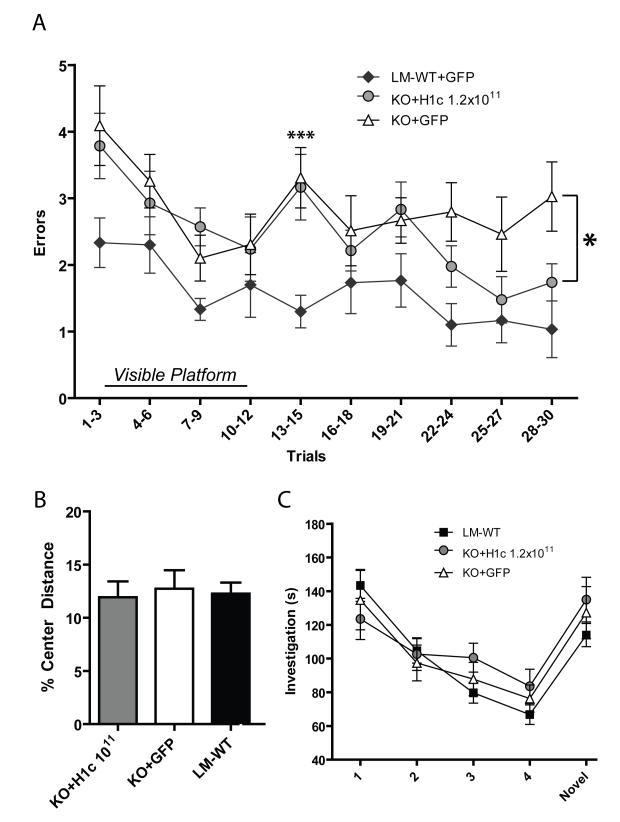Figure 5.
.(A and B) H1-KO mice display spatial learning deficits on the RAWM that can be rescued by rAAV-Homer1c delivery to the hippocampus. The Y-axis designates number of incorrect arm entries shown by experimental group; The X axis shows trials binned by groups of three. The first ten trials represent the visual version of the task. High dose rAAV-H1c rescues the H1-KO deficits to a level significantly above that of KO+GFP. High dose KO+H1c (n = 14); low dose KO+H1c (n = 14); KO+GFP (n = 13); LM-WT+GFP (n = 10); LM-WT (n = 15). (C) Performance in the open pool task shows that H1-KO ability is similar to LM-WT and injected KO (same n values as for 5B, LM-WT+GFP not shown) (D) Locomotion in the center of a novel open field during 15 min trial. Percentage of center locomotion (cm) out of total ambulation in open field is shown for each experimental group. High dose KO+H1c (n=13); low dose KO+H1c (n=11); KO+GFP n=11); LM-WT (n=21). (E) Investigation of juvenile intruder (s) across 5 trials of exposure. The same individual juvenile intruder is placed into the cage on Trials 1-4, then a novel juvenile intruder is introduced on Trial 5. No significant difference in behavior was observed between the different experimental groups. High dose KO+H1c (n=13); low dose KO+H1c (n=14); KO+GFP (n=13); LM-WT (n=15).

